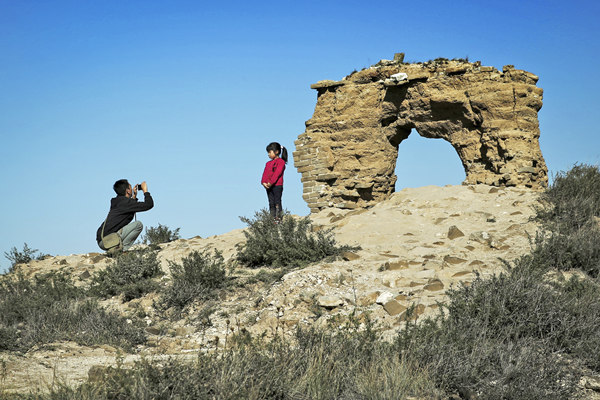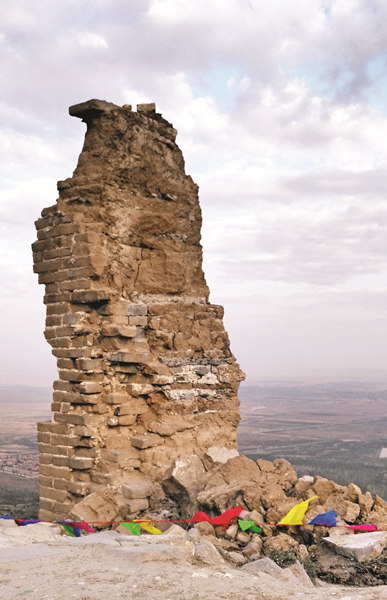 |
|
Tourists visit the "Moon Gate" in Shanxi province on Monday. The structure collapsed later. Liu Tao / For China Daily |
Collapse of ‘Moon Gate’ raises questions of best ways to safeguard icon
The recent collapse of the Great Wall’s "Moon Gate" — a well-known landmark in Guangwu, Shanxi province — has put protection of the wall into the limelight a second time in a few weeks.
The gate, which was already suffering decay, was part of an old watchtower. It apparently collapsed on Monday night. Local authorities have yet to make an official statement.
Environmental degradation, mining, construction and brick theft are the main reasons for the wall’s decay, according to local geologists. In recent years, poor repair efforts have also taken a toll.
Exactly how to repair or protect wall sections became the subject of heated public debate recently after a stretch of 780 meters of "wild", or original, wall dating to the 14th century was covered in white cement under orders from the cultural relics bureau of Suizhong county in Liaoning province.
 |
| After the collapse. Wang Yudong / for China Daily |
The preservation approach drew a sharp backlash when it became public last month.
Dong Yaohui, deputy director of the Great Wall Society of China, an organization dedicated to the preservation and protection of the wall, said the restoration work had been done "very poorly".
"It damaged the authentic look of the Great Wall and took away its history from the people," he said.
Like that wall section in Liaoning, the stretch in Shanxi was built during the Ming Dynasty (1368-1644) and served as a key historical and cultural reference when Beijing repaired its own sections.
"Wild" sections of the wall are usually located in remote rural areas.
They have been hammered by hundreds of years of storms, and local villagers have used their bricks for construction, making the structures unsuitable for ordinary tourists to enjoy, unlike Beijing’s world-renowned Badaling and Juyongguan Great Wall sections.
In 2006, the Great Wall Protection Ordinance was passed by the State Council, China’s Cabinet, to improve protection and strengthen regulation. After 10 years, however, many parts of the wall remain structurally compromised, especially in areas where tourists don’t go, said Wu Guoqiang, the society’s secretary-general.
Wu said a lack of detailed procedures and renovation standards are at the root of lackluster repairs, but these criteria take time to be established. Consequently, Wu said that a special foundation for Great Wall protection should be established. He also emphasized the use of modern technology.
"If we can use 3D modeling and virtual reality technologies to map out bricks and cracks in the Great Wall, it will improve the quality of restoration," he said.
On Monday, the relics bureau in Suizhong, Liaoning, hired two dozen local farmers to erect concrete pillars and string wire fencing to discourage tourists from climbing on the wall, which could be dangerous, said Liu Chunhua, the bureau’s deputy chief.
Liu Fusheng, the Yongan Zhuishan forest management director in Suizhong, claimed he helped to raise more than 5 million yuan ($750,000) over the past 13 years to protect the local wall section and possibly turn it into a tourist attraction for backpackers. His efforts were wasted, he said, when the wall was turned into pavement.
"It is like losing the ears, nose and all the other features of a face," he said.
